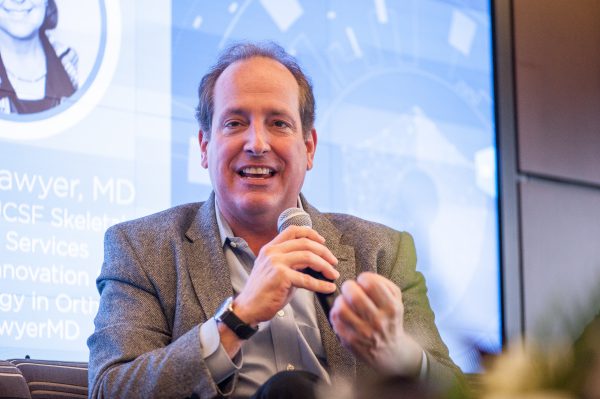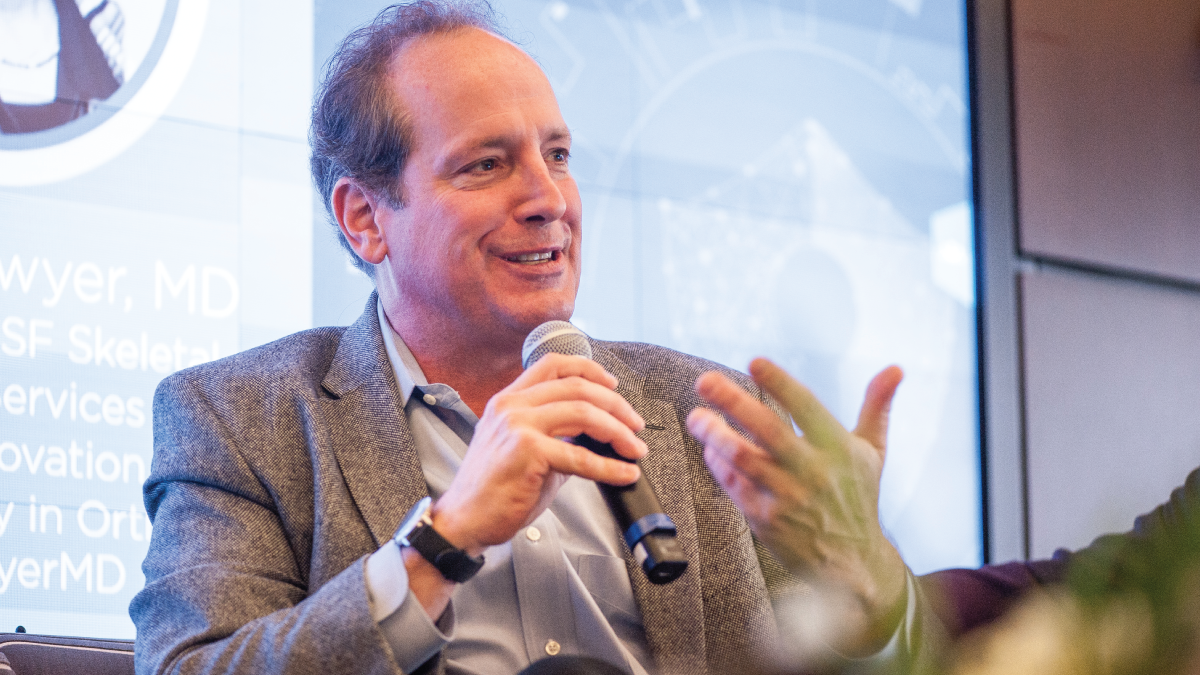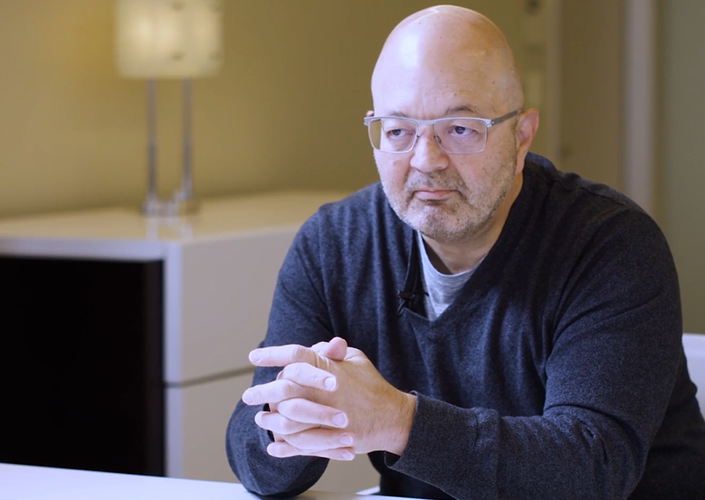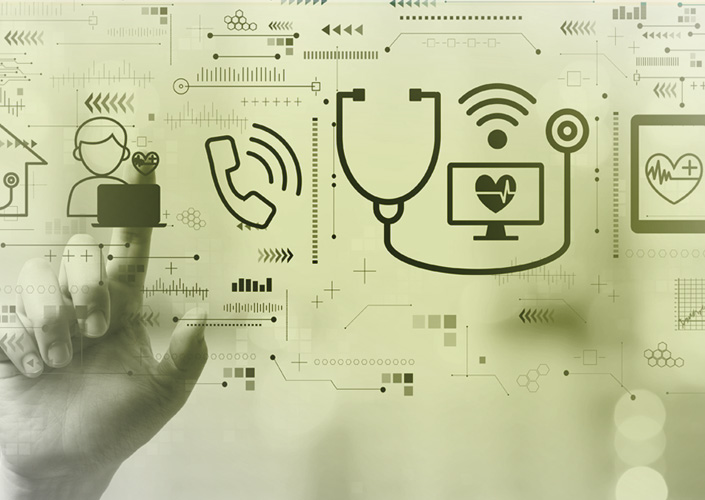Watch a video of Nokia’s Karl Bream discussing the rise in investment in digital health at the Top of Mind 2019 Summit
Investments in digital health are hitting record levels and an expert in health information technology (IT) believes the increase in funding is being driven by health system leaders in need of technology solutions.
Karl Bream, Vice President of Strategy and Portfolio at Nokia Enterprise, says health systems are feeling pain as they try to improve operations, quality of care, and patient experience. Entrepreneurs are stepping forward with technology to address these pain points, and investors are following.
“I think that’s what’s happening in health care — that pain has become acute and now the investment has come,” Mr. Bream said during a panel discussion at the Center for Connected Medicine’s Top of Mind 2019 Summit.
Digital health investments climbing
Investors poured nearly $8.1 billion into digital health startups in 2018, setting a record for yearly digital health investment, according to Rock Health. A total of $5.7 billion was invested in digital health in 2017.
Rock Health said half of all 2018 deals were seed and Series A rounds, “suggesting investors continue to believe in new entrants as they double-down on maturing, later-stage companies.”
Mr. Bream, who has been a speaker at two Top of Mind summits, also talked about his background in health IT and where he sees the industry heading in a separate interview with the Center for Connected Medicine (CCM). The CCM, which is jointly operated by GE Healthcare, Nokia, and UPMC, connects and inspires digital health leaders through original research and industry analysis, virtual events, and on-site experiences.
Read the interview with Mr. Bream below
Question: What is your focus at Nokia?
Answer: Nokia is currently focused on two big areas. The first is 5G and the second is the Internet of Things. As consumers it might be hard to believe, but 5G network rollouts are starting in 2018 in North America, China, South Korea, and the Nordics. It seems like it wasn’t too long ago we moved to 4G/LTE. Health care IT can benefit from the faster speeds, the lower latency, and security and reliability of 5G that can be tailored to the specific needs of each health care business.
The second area, the Internet of Things, will be transformative to health care IT as well. The impact will be felt in care delivery, efficient health system operations, and digital infrastructure. In care delivery, personalized medicine and improved adherence will improve patient outcomes. Efficient operations and digital infrastructure enable those outcomes while reducing health care costs. For example, new private LTE networks and automation platforms outperform today’s WiFi networks to enable asset intelligence with greater coverage, stronger uplinks, better avoidance of interference, and more precise location and asset positioning both indoors and outdoors. Health systems and hospitals that are using the capabilities are reporting better performance with an improved total cost of ownership.
Top of Mind 2019 survey
Read more findings from the Top of Mind 2019 research by downloading the full report. The free report provides insights from health system leaders on three top IT priorities in health care: Cybersecurity, Telehealth, and Interoperability.
Q: Talk about your career trajectory. What was the path to your current role in health care IT?
A: Digital technology and networking have been critical in driving massive changes to many industries. Music, books, videos, shopping and commerce digitized early and drove an explosion in data and connectivity. As this transformation came to health care, with its unique opportunities and challenges, I saw it as an opportunity to provide both economic and social value through networking technology and that was exciting. At that point I shifted focus to really understand the value that technologies like 5G, private networking, and automation platforms could bring to providers, payers, and patients.
Q: What was a challenge you had to overcome? What helped you succeed?
A: The main challenge was shifting my focus to a new industry when I started working in health care. While many industries have similar digital needs such as asset management, predictive maintenance, improved customer experience, high performance connectivity, etc., health care needs are unique, and the language is different. Regulation and liability are probably the two biggest challenges to understand.
To overcome those challenges, I immersed myself with Nokia’s customers like UPMC, with others who went through similar experiences, with industry associations and events like the Center for Connected Medicine, from good old fashion books, and of course the Internet. It didn’t hurt that several of my family and friends are health care providers and were able to help.
Q: What makes the health care IT industry unique in comparison to the overall IT industry?
A: The challenge in health care delivery versus other industries is in the type of regulation and liabilities that apply. Many industries have specific regulations for consumer and infrastructure safety, and health care is no different. Health IT companies need to make sure that they adhere to those regulations and that their networks and systems are compliant and secure. This can be both a challenge and an opportunity. Adherence to regulation can be a hurdle to mass deployment, but regulatory decisions can also become accelerators to health IT (e.g. electronic medical record mandates).
See more videos from the Top of Mind 2019 Summit
Cloud cybersecurity: Why health systems should work together to manage risk
Vivian Lee says Verily wants to help patients make health data more useful
Don Rucker addresses health care prices, APIs, and White House support for interoperability
Consumerism: Health systems are the taxi industry in an Uber world
Cybersecurity is the biggest priority and challenge for health systems, leaders say
Q: During your career what is the biggest change in business practice that you’ve seen, and what has been the impact of that change?

A: The biggest change that I have seen is the pace of change itself. The rate of adoption and impact of new technologies has created significant economic value in the last two to three decades. In that time, digital connectivity went from 2G to 3G to 4G and now to 5G. Mobile first business practices and models emerged. Likewise, public and hybrid cloud adoption and “as a service” consumption are dramatically reshaping today’s health care IT. Cloud first business practices and models have grown rapidly. The next wave is intelligence and automation which leverage higher performance connectivity and cloud. These technologies will augment human intelligence in the delivery and efficiency of health care.
While the impacts of each of those changes is dramatic, the accelerating pace of those changes is what impacts the health care the most. Globally, both private and public health systems can change quickly, grow rapidly, and provide best in class personalized medicine.
Q: As a leader in health care IT, how do you stay savvy on topics within the evolving industry?
A: Today staying savvy means collaborating with Nokia’s customers and industry associations. The pace of change is accelerating and so collaborating and testing new solutions to health care challenges is key. At Nokia we work with health care providers to jointly test and benchmark new applications and use cases that solve a challenge or provide a business outcome. As we solve each challenge and learn, new ideas and ways to apply technology emerge. That continuing cycle of collaboration keeps us on the forefront of the evolving industry and guides us to where we can provide the maximum value.
Q: How does your health care IT expertise influence your personal and family health care decisions?
A: It has turned my family into health technology consumers. I have always been an early adopter of technology and need to try everything. Our family has connected blood pressure monitors, thermometers, EKGs, cardio scales, sleep sensors, stress sensors, and activity monitors. I admit though that we don’t need them all and only use the scale, sleep sensor, and activity monitors on a regular basis!
I have been a bit surprised by the percentage of care providers that aren’t aware that some of these tools are available and might help patient outcomes for some chronic diseases. That needs to change.
Q: What does the future of health care IT look like to you?
A: Better patient and care giver experiences and outcomes are the goal. To deliver against the goal, health care IT will need to become more integrated and more automated. New data will need to be captured, connected, and processed. Some examples of “missing data” include, the location and availability of medical equipment, the location patients and their families, the 24×7 patient adherence data, etc. This data must be sensed, located, and connected.
Likewise, data that has been in disparate systems will need to be integrated and secured. This is how we as an industry we will capture the full view of our patients and our operations. There is a lot of IT behind making this happen, but this is the route to efficient personalize medicine.
Q: What health care IT topic will be most influential in 2019?
A: Security and privacy will continue to be both an opportunity and a challenge in 2019. This includes data bases where patient records are stored, in the cloud where operational data is stored, and in the networks that connect the data. This strong need for secure, high performing networks that connect machines and other assets is one of the reasons Nokia is optimistic about private LTE networks in health care. Private LTE is much more secure and reliable than other forms of private connectivity.
Q: What advice do you have for future health care IT leaders?
A: Focus on the patient experience and business outcomes of a technology. Too often, IT leaders focus on the technology itself and lose sight of making sure is truly useful and provides a return on investment. This isn’t specific to health care IT. The best CIO’s across industries are the ones with both the vision for the technology and the expected outcome for the customer and the business.
Sometimes focusing on outcomes means partnering vs. doing it yourself. My second bit of advice is to search out great partners. No one company can do it themselves. If they can, it might be too small or less impactful than it needs to be. It will take an ecosystem to accelerate the benefits of technology in health care.



